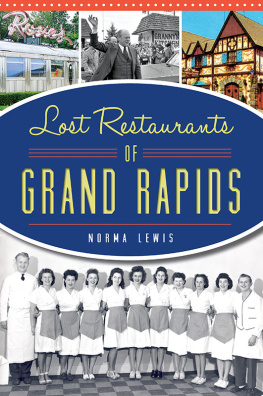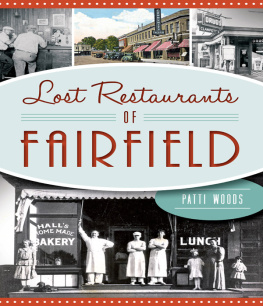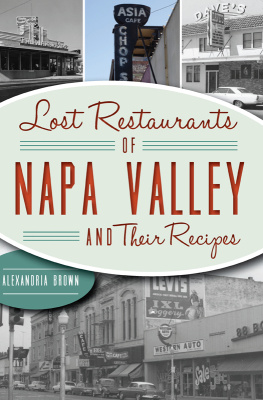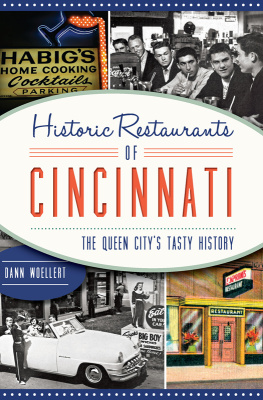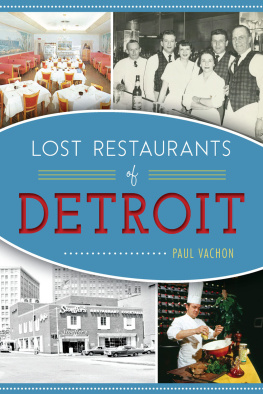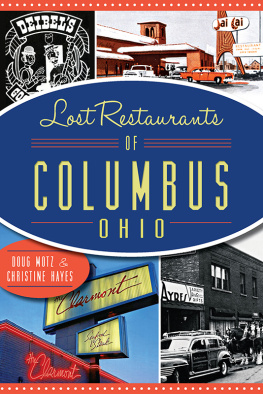

Published by American Palate
A Division of The History Press
Charleston, SC
www.historypress.net
Copyright 2015 by Norma Lewis
All rights reserved
Front cover: Upper right image of the exterior of the Schnitzelbank Restaurant courtesy of the Grand Rapids Public Library.
First published 2015
e-book edition 2015
ISBN 978.1.62585.613.5
Library of Congress Control Number: 2015953066
print edition ISBN 978.1.46711.887.3
Notice: The information in this book is true and complete to the best of our knowledge. It is offered without guarantee on the part of the author or The History Press. The author and The History Press disclaim all liability in connection with the use of this book.
All rights reserved. No part of this book may be reproduced or transmitted in any form whatsoever without prior written permission from the publisher except in the case of brief quotations embodied in critical articles and reviews
This one is for friends, especially Christine Nyholm, and in memory of
Linda Butcher and Rosalie Moore.
Contents
Acknowledgements
A huge thank-you to the always knowledgeable and ever helpful staff at the Grand Rapids Public Library Local History Department. Especially Tim Gleisner, head of special collections, for his help in finding hidden treasure, and Julie Tabberer for the great job she did on many of the scans in this book. Thanks also to Alex Forist, collection curator at the Grand Rapids Public Museum. Elaine Snyder from the Byron Museum and Historical Museum and Elizabeth Druga, audiovisual archivist at the Gerald R. Ford Presidential Library, provided images. Thank you. Also, kudos to the unknown and unsung people everywhere who save old photographs and old stories that make local histories possible to re-create.
I am indebted to Jeff Lobdell, president of Restaurant Partners Inc., who generously shared his intimate knowledge of the Grand Rapids restaurant scene. And to Tom Maas from the Wyoming Historical Commission for not only his help but also his enthusiasm for this project. Thanks, too, to Rick Mack at the Choo Choo, Matt Dowdy, Bill Koski and Matt Rule at the Gilmore Collection, as well as Dan Verhill at the Cottage Bar.
A huge thank-you to Krista Slavicek, who held my hand when necessary and gently guided me through the History Press process, and Ryan Finn for a terrific edit. Any errors are mine alone. Thanks also to all the behind-the-scenes people at Arcadia Publishing/The History Press who work so hard making great things happen.
I appreciate the help and support given by my friends at the West Michigan Writers Workshop. Youre the best! My granddaughter Shelby Ayers stepped up when I needed her, and so did my daughter, Rhonda Ayers. I love you both and thank you.
Introduction
Nothing evokes more memories than foodwhat we ate, where we ate it and with whom. Grand Rapids has a rich history of restaurants serving up meals and precious memories since its earliest days. Some have been gone too long to be remembered by anyone today, but they left an indelible mark on the fledgling city on the rapids. Early settlers started them out of necessity.
In more recent times, others have come and gone, some opened by colorful entrepreneurs and patronized by even more colorful residents and visitors. Many became so popular that they are still missed and have become an important part of our local lore.
We remember the tastes, aromas and atmosphere of those gone but not forgotten venues that shaped our lives. We will never forget where we went on a first date with a future spouse or, conversely, the scene of our most cringe-worthy date. The places we celebrated graduations, engagements, anniversaries, retirements and birthdays. Also, those everyday favorites, including lunch counters, diners and malt shops where, like the television Cheers bar, everybody knew your name. Spots that had a real sense of place, unlike todays offerings, where, if you are traveling, its impossible to tell whether you are scarfing down your burger and fries in Hartford, Houston or Hong Kong.
CHAPTER 1
In the Beginning
As in most fledgling cities, the majority of the earliest restaurants were found in hotels. The average family ate out only on special occasions, and singles often lived in boardinghouses, where their meals were furnished. Immigrants trying to put down roots in their new city usually didnt have disposable income for dining out. The Dutch, in particular, were known for their frugality. But those who mocked them at the time were later impressed when that tight-fistedness soon made it possible for them to buy homes and start businesses. Over time, they became the citys leading philanthropists.
Newcomers find the downtown streets confusing, if not annoying. Looking for a highly touted restaurant can be a challenge. They soon learn that the city was laid out in a peculiar pattern due to the preferencesor, as some would say, pigheadednessof rival settlers Lucius Lyon and Louis Campau. Lyon was a surveyor, among his many talents, and his contribution resulted in a neatly ordered grid.
Campau, a fur trader, chose a crazy-quilt maze of old Indian trails blazed by the Ottawa Indians, the second group of Native Americans to settle here. The first were the Hopewells. One path is said to be a cow trail. In his entertaining book, The Yesterdays of Grand Rapids, Charles Belknap stated that Grandville Avenue was actually a trail made by a homesick cow who became lost in the woods and took a convoluted route back to the barn. Belknap arrived on the scene at age eight.
The two men also disagreed on what to call the growing area. Campau named the seventy-two acres he had bought for ninety dollars in 1826 Grand Rapids, while Lyon chose Kent as the name of his holdings north of Campaus land. Grand Rapids won, and the area became a city in 1850. Actually, they both won, as the city of Grand Rapids is in Kent County.
John Ball, a prosperous lawyer for whom the John Ball Park and Zoo is named, relocated permanently to Grand Rapids in the spring of 1837. He wrote in Images of the Grand River Valley in the 1830s that Uncle Louis Campaus mansion was still part of the Rathbun House. During his first visit to the city, Ball stayed and dined at the Eagle Hotel, the only available option.
In the mid-1800s, the area known as Grab Corners dominated the city. The unflattering nickname came from the abundance of poker rooms and sleazy bars, and it was later called Campau Square. It is located between Monroe Avenue and Canal Street, just before the infamous Highway 131 S curve.
Pioneers not lucky enough to have brought wives to cook for them either lived in boardinghouses or frequented the early cafs, taverns and hotel dining rooms. Among the Grab Corners options were, according to Belknap, a half dozen dives and several basement bars where men drank whiskey from tin cups. Saloon owners often served free lunches comprising delicacies that included sour beef, ham and salt-cured fish, all of which were spiced with horseradish and other condiments calculated to enhance the diners thirst. The beer and alcohol flowed and more than made up for the free food.
Hotels included the Rathbun, the Eagle and the National. Belknap remembered living for three years close to the Rathbun and the mouthwatering aromas emanating from the hotel kitchen. The Eagle not so much, as that hotels pork, cabbage and corned beef was the same fare he ate at home. The National was noted for an exceptionally delicious chicken pot pie.
Next page
